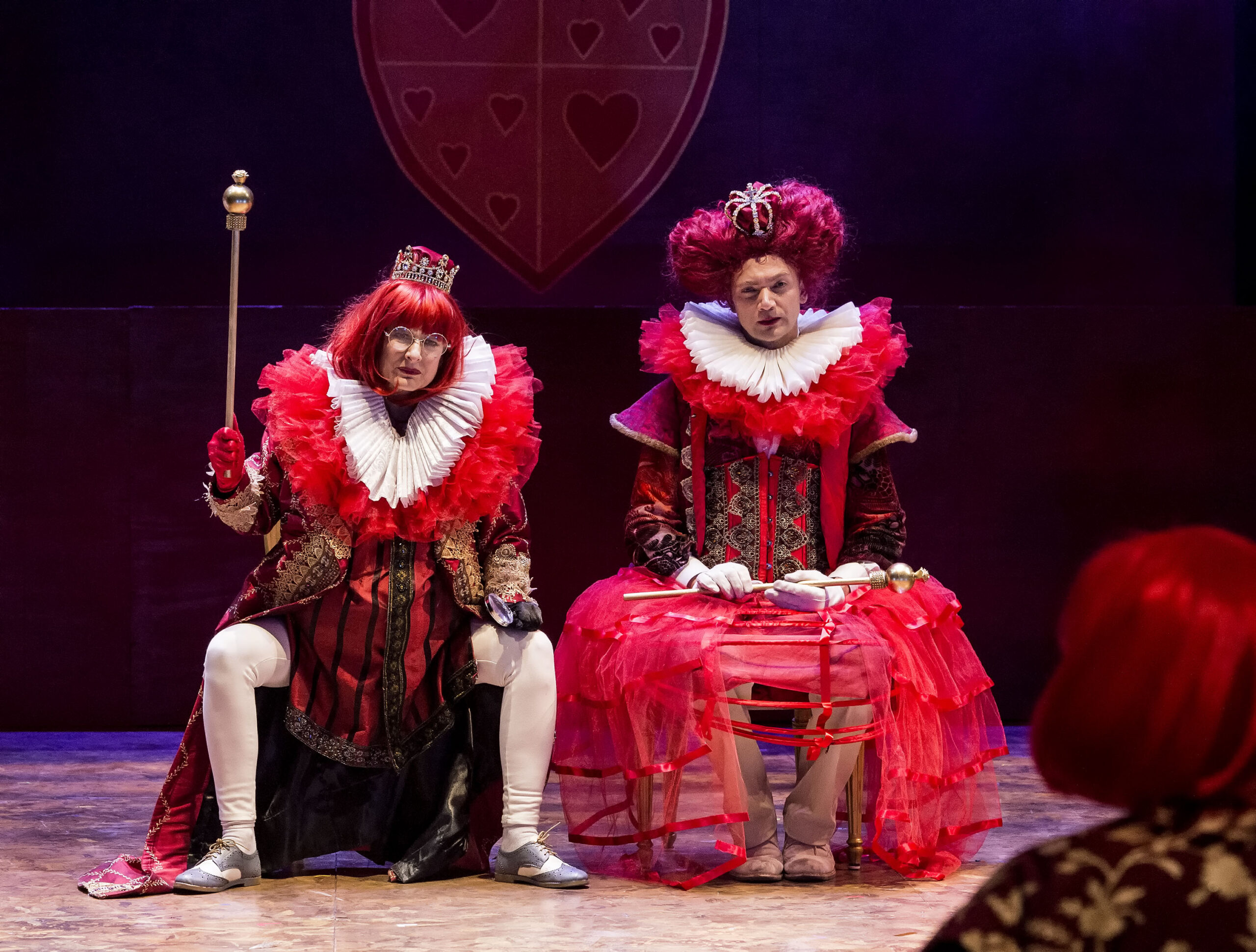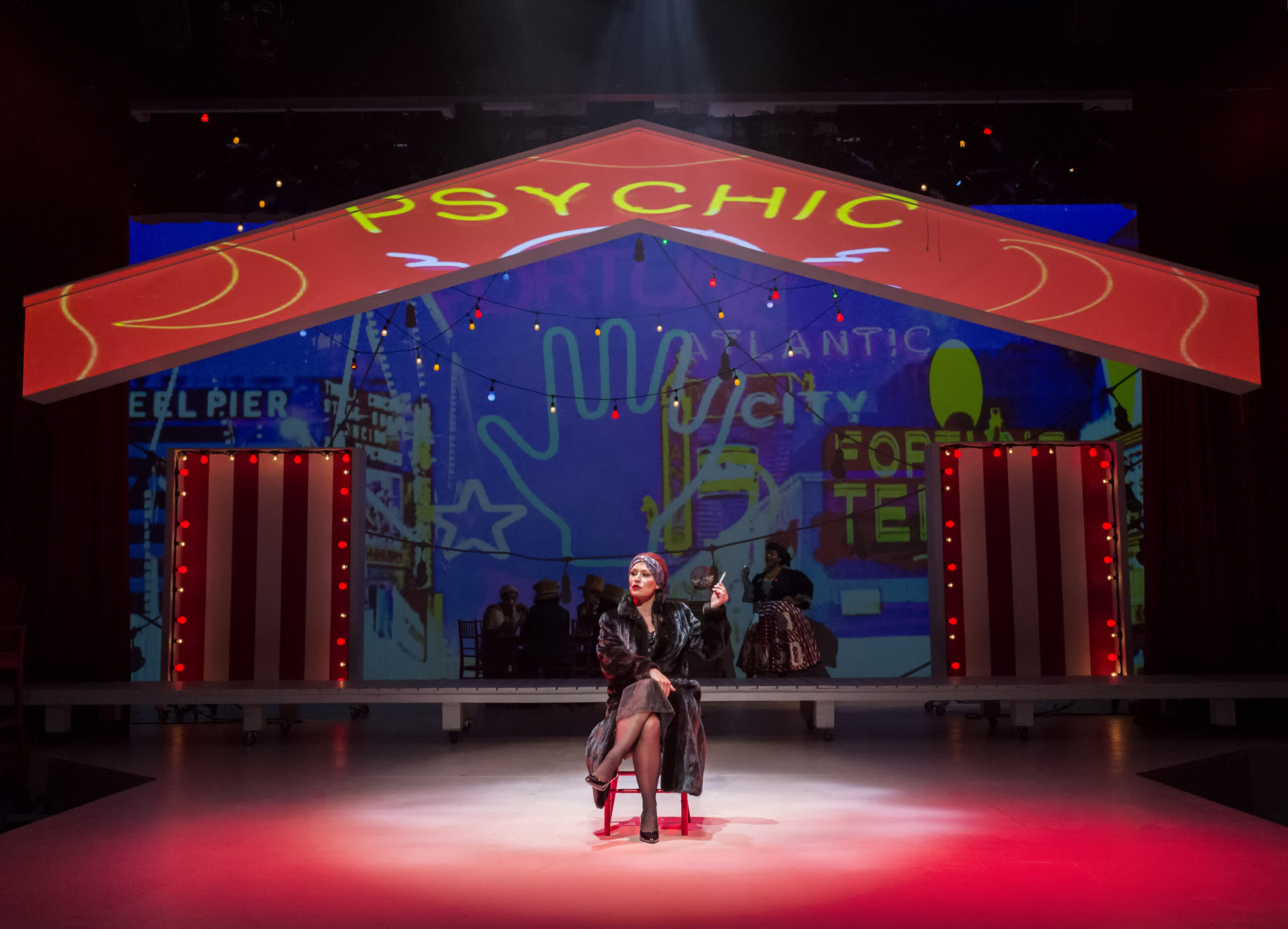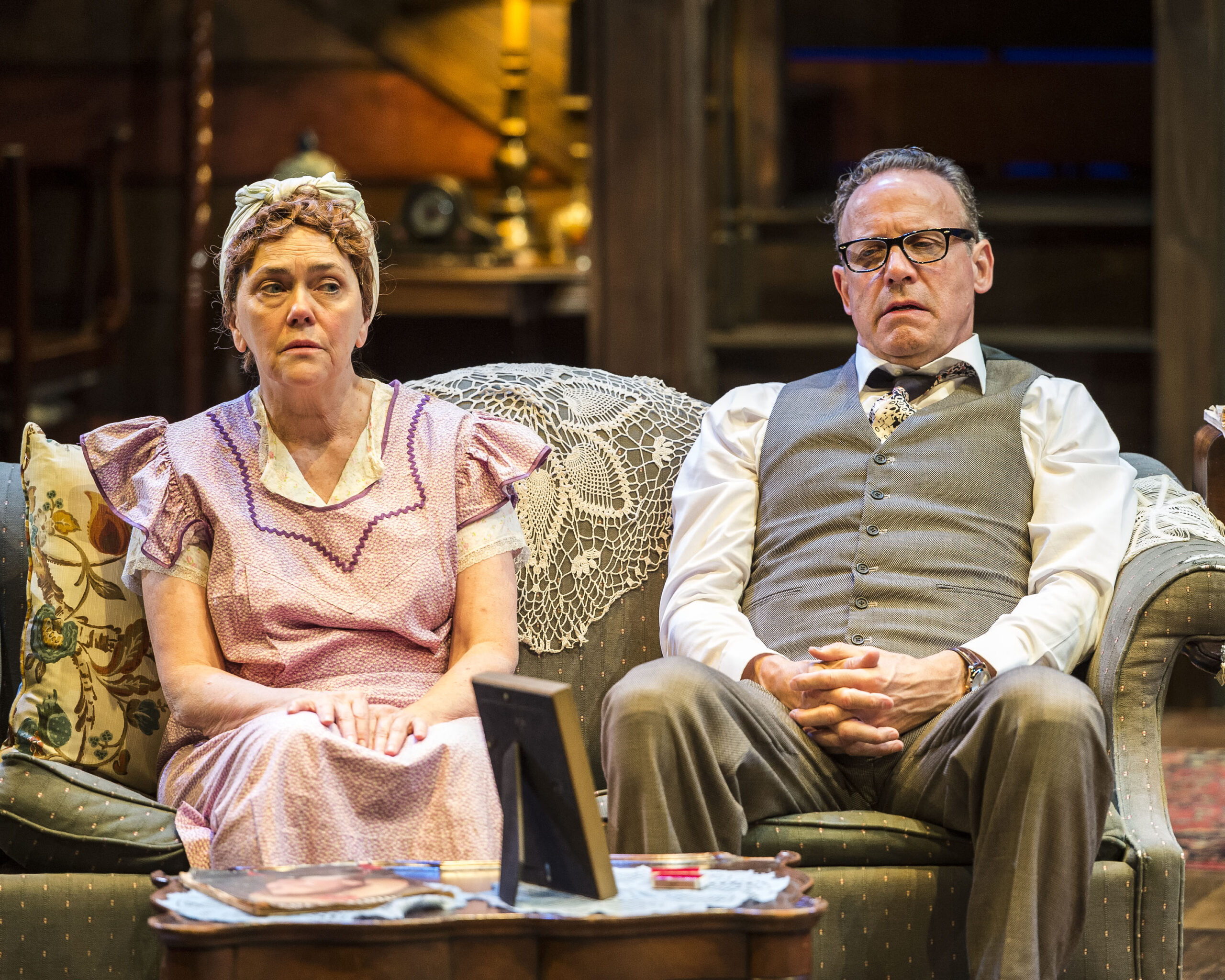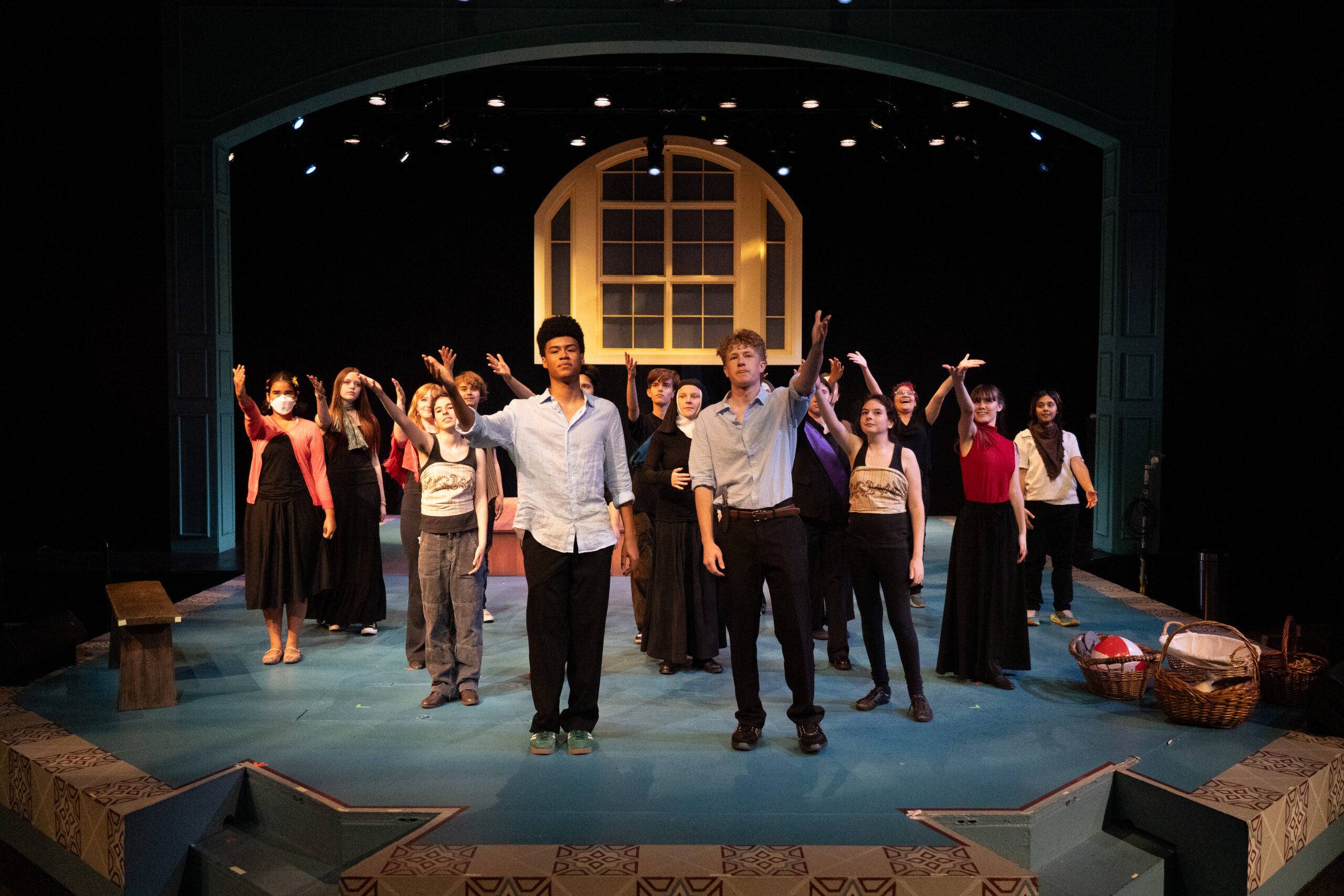Shakespeare’s The Winter’s Tale and the Transformative Power of Theatre

By A Noise Within
January 28, 2020
Sometimes audiences need a little extra context to fully enjoy a Shakespeare production. How can we understand the emotional stakes of Romeo and Juliet’s love without first understanding the culture they came from and the expectations for young people that came with that culture? More knowledge of the time and place for Shakespeare’s work can only enrich our experience when we see the play ourselves.
ANW appreciates the need for this understanding and has provided an audience guide brimming with background information and throught-provoking prompts that will help you to further appreciate this classic Shakespeare romance, including an article by our resident Shakespeare consultant Dr. Miranda Johnson-Haddad: “Shakespeare’s The Winter’s Tale and the Transformative Power of Theatre.”
William Shakespeare’s The Winter’s Tale, written around 1611, is considered to be one of the author’s last four plays, which are known as the late Romances (after the Italian “romanzo,” a poetic form) because they defy standard genre definitions. Like the other Romances (Pericles, Cymbeline, and The Tempest), The Winter’s Tale is primarily a family drama, in which the author explores such themes as betrayal, loss, and forgiveness through the prism of the father-daughter relationship. In Winter’s Tale, however, Shakespeare seems even more intrigued by the bond between husband and wife, and by the destructive forces of male paranoia and male sexual anxiety, forces that today we might describe as reflecting a culture of “toxic masculinity.” Although other Shakespeare plays, especially the mature tragedies, focus on similar themes—male jealousy, doubt about the legitimacy of one’s own children—these fears as presented in Winter’s Tale occur without any cause (unlike Othello, Leontes has no Iago whispering insinuations in his ear), and the punishment for these sins is carried out swiftly and ruthlessly. But in the end, because Winter’s Tale is a Romance and not a tragedy, forgiveness is granted and redemption is achieved, though not all losses are capable of being reversed.
Shakespeare’s late Romances share many thematic features, including bizarre supernatural elements; storms and shipwrecks; separations and reunions; plotlines that play out over many years; and young lovers who ultimately triumph against all odds. But the overarching theme is always familial love and loss, and the need that all of us have for forgiveness. The Romances are sometimes described as “tragicomedies” or “comedies of forgiveness,” because like the earlier comedies, the Romances end happily. But it is a mature kind of happiness: the peace that comes with gaining a greater understanding of human nature, rather than the joy of youthful love and of the multiple weddings that conclude the earlier plays. The ending of Winter’s Tale may be the most bittersweet of any of the late Romances, because in this strange and strangely moving play, some actions cannot be undone, and not all losses can be restored. Nevertheless, any lingering heartache renders the forgiveness a much greater of a gift, and the consequent redemption that much more of a blessing.
The first three acts of Winter’s Tale unquestionably read like tragedy. Leontes, the king of Sicilia, has without evidence accused his pregnant wife, Hermione, of committing adultery with his best friend, Polixenes, the king of Bohemia. The craven courtiers who surround Leontes are too fearful to stand up to him. Instead, Hermione’s friend Paulina, one of Shakespeare’s most remarkable female characters, must speak truth to power. Her efforts prove fruitless, however; Leontes doubles down on his accusations, even defying the Oracle of Apollo when it proclaims Hermione’s innocence. The retribution for this sacrilege is immediate and relentless: word is brought that both Mamillius, the king’s son, and Hermione are dead, and the baby, Perdita, abandoned in the wilderness of Bohemia at Leontes’ command, is thought to be irretrievably lost as well. Too late, Leontes realizes the madness of what he has done. But unlike Leontes, the audience will very soon learn that Perdita has survived and has been found by a kindly shepherd. For the audience, at least, hope remains; and the possibility of a shift away from tragedy is signaled by the words that the Old Shepherd speaks to his son in one of the loveliest lines in all of Shakespeare: “Thou met’st with things dying, I with things newborn.”
The transition that occurs in Act 4 from tragedy to comedy is so abrupt as to be almost jarring. Bohemia, which was largely understood to be a fictitious locale during Shakespeare’s time, represents one of the playwright’s many “other” worlds, similar to the Forest of Arden in As You Like It, Illyria in Twelfth Night, or Prospero’s island in The Tempest. Anything can happen in these places that exist outside of the “civilized” or courtly world, for they represent alternative psychological spaces as well as physical ones. The sheep-shearing festival further recalls the idealized country scenes described in pastoral literature, which was enormously popular in Elizabethan England, though somewhat out of fashion by the time Shakespeare was writing Winter’s Tale. Act 4, which is unusually long for a Shakespearean Romance, is often significantly shortened in performance; and though this practice is usually all to the good, productions that pare Act 4 down too much run the risk of defeating its evident purpose, which is to alert the audience that we are now safely out of the realm of tragedy, and that despite any troubles that arise for the young lovers, Perdita and Florizel, the ending of the play will be a happy one.
If the late Romances seem to embody contradictory literary genres, they also occupy a dramatic space that is both satisfyingly theatrical and notoriously difficult to stage. Winter’s Tale in particular presents many wonderfully dramatic moments, including the Oracle of Apollo; that famous bear at the end of Act 3; the Chorus-like speech by Time that opens Act 4; and, most memorable of all, the statue scene at the play’s conclusion. Such moments may strain credulity, yet they also remind us of what we love most about theatre—its spectacle, its fantasy, and its ability to take us out of ourselves. Several characters in Winter’s Tale call attention to and comment upon the improbable and fantastical nature of the play—and, by implication, of every play—even as they urge us to embrace this same unbelievability.
Nevertheless, despite the joy afforded by these moments, there’s no denying that Winter’s Tale can be challenging to stage. All too often, production choices that attempt to resolve certain problems have ended up creating new ones. One example is the choice that some directors have made to double cast Hermione and Perdita, as in the 1969 Royal Shakespeare Company production directed by Trevor Nunn, in which a young Judi Dench played both Hermione and Perdita. This choice has been repeated occasionally by later directors, but the text does not support this double casting, and it inevitably makes for an awkward final scene. A more successful doubling can be seen in the 1999 Royal Shakespeare Company production directed by Gregory Doran, in which actress Emily Bruni played both Mamillius and Perdita, a doubling that gave an added resonance to the Oracle’s prophecy that “the king will live without an heir if that which is lost be not found.” The biggest staging headache, though, is surely caused by the problem of what to do with that bear. We do not know whether in Shakespeare’s time the bear would have been played by an actor in a bear costume or by an actual bear, perhaps borrowed from the Bear Garden next door to Shakespeare’s Globe theatre (though the latter theory is no longer widely believed). This tricky dramatic moment, if not handled effectively, may cause the audience to laugh at what is, in fact, a tragic event; but if handled well, the moment can produce genuine awe and wonder.
The tension inherent in these moments may account in part for why Winter’s Tale is one of Shakespeare’s less performed plays. Certainly any audience viewing this play would be well-advised to take Paulina’s words to heart: “It is required / You do awake your faith.” Shakespeare often explores the implicit contract between actors and audiences. With characters such as the Chorus of Henry V and Gower of Pericles, and with the theatrical metaphors employed by so many of his characters, from Rosalind to Cassius, from Lear to Cleopatra, Shakespeare reminds us again and again that he was not only a playwright but an actor too; and these dual roles allowed him to contemplate with special insight the way that suspension of disbelief must operate within the theatre. Perhaps in no other play does Shakespeare call attention to the need for an audience to believe in what they see onstage as clearly as he does in Winter’s Tale, the very title of which alerts us to the inherent fictitiousness of what we are witnessing. As audience members, we always have the option to scoff at what we are seeing, to “hoot” at it, as Paulina says, “like an old tale.” But if we choose to go this more cynical route, we inevitably rob ourselves not only of the delight that a given play can provide, but also of the profoundly redemptive power of theatre, and of the Romance plays in particular. We would do better, the playwright implies, to enter fully into the world we see onstage, fantastical and unrealistic as it may be, and to wholly embrace the play in all its glorious theatricality. Only then will we be able to participate fully in the play’s transformative power, and only then may we truly appreciate the beauty and the wisdom that it offers us—much as Leontes himself is transformed and redeemed by Hermione’s love and forgiveness. If we as theatregoers are able to do this, we will be the better for it; and we may well find that once we’ve done so, there isn’t a bear in sight. ♦
Get tickets to The Winter’s Tale.
ADDITIONAL RESOURCES
– For information about the source material for The Winter’s Tale, see, among others, The Riverside Shakespeare, 2nd edition (New York: Houghton Mifflin, 1997), introductory material to The Winter’s Tale.
– Marjorie Garber’s Shakespeare After All (Anchor Press, 2005) offers insightful discussions of Shakespeare’s plays by a well-known Harvard professor. Several of Dr. Garber’s lectures can also be viewed on YouTube.
– For historical background on Shakespeare and his plays, see The Bedford Companion to Shakespeare, edited by Russ McDonald (Bedford Books of St. Martin’s Press, Boston and New York: 2001).
– For additional resources specifically on The Winter’s Tale, see The New Folger Shakespeare Library edition, edited by Barbara Mowat and Paul Werstine (New York: Simon & Schuster, 1998), in the “Further Reading” section. NOTE: Although in general I recommend the New Folger editions, I do not recommend that edition for students who are reading The Winter’s Tale. Teachers may wish to guide their students to the David Bevington or Arden editions instead.
– For a provocative re-imagining and updating of the play, see Jeannette Winterson, The Gap of Time (Hogarth Shakespeare Series: 2015). NOTE: Sexually explicit language and situations. For another re-imagining, see E.K. Johnston’s YA novel Exit, Pursued by a Bear (New York: Penguin, 2016). NOTE: Disturbing themes, including rape. For yet another reimagining, see Helen Oyeyemi, Gingerbread (London: Penguin, 2019). NOTE: Disturbing themes, including what initially appears to be a suicide attempt by the young heroine (although she survives and explains that her intention was not to commit suicide, but that she was, in fact, tricked).









